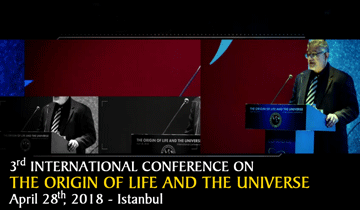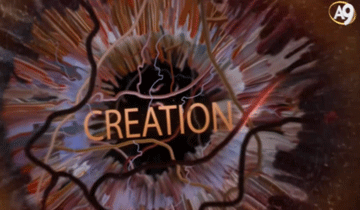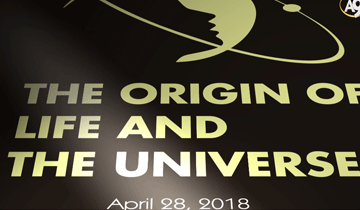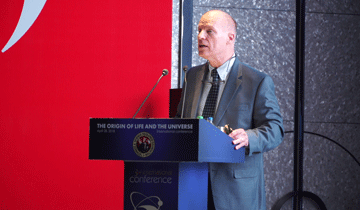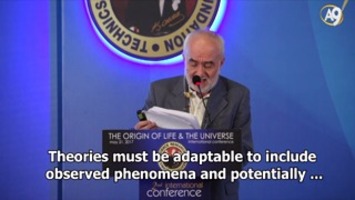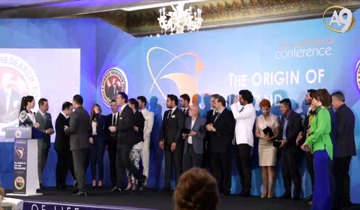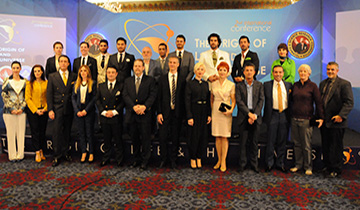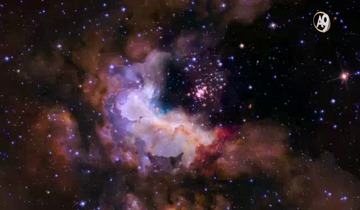Dr. Bijan Nemati, Physicst, 3rd International Conference on the Origin of Life and the Universe, April 28th, 2018-istanbul
BIJAN NEMATI
The Pale Blue Dot Revisited:
Appreciating Our Uncommon Place in the Universe
Bijan Nemati
We live in an era where the dominant scientific worldview is based on materialism, a metaphysics that holds aspects of the physical world, such as matter and energy, as self-existent. From the physical universe and its laws, this view claims, we can explain everything we see, everything we experience. The material universe is sufficient to explain the nature of all that exists, and if that is true, in the words of the late Stephen Hawking, “science can explain the universe without the need for a creator.” This or some variation of this view is very common in our day, particularly in academic circles.
Yet, this view leaves many questions unanswered. For example, what is the nature of consciousness? What is the origin of morality? Does it even exist? What about love, or mercy? Are these illusions? Are they simply electrochemical impulses? Did they simply arise as encoded reactionary patterns our brains through evolution? If so, are moral principles simply reducible to mathematics and statistics? And finally, given these questions, can a proponent of materialism live their life consistently with their worldview?
While these profound questions remain unanswered, materialists use ancillary arguments in support of their view. One such argument, that I want to examine here, is the appeal to mediocrity. To explain what I mean consider, the story of the pale blue dot:
In his book, the Pale Blue Dot, the late astronomer Carl Sagan recounts an event that occurred in the course of NASA’s Voyager 1 mission. In 1990, 12 years after the launch of Voyager 1, the spacecraft had left the outer planets of the solar system, and on February 14, it was commanded to turn around and take a family portrait of the planets in the solar system it was forever leaving behind. When the images were transmitted back, NASA engineers were having difficulty finding the Earth. Eventually they found it, as a pale blue dot, near a shaft of light that was entering the camera, reflecting from some point on the spacecraft. About this, Sagan, had this to say:
“Because of the reflection of sunlight . . . the Earth seems to be sitting in a beam of light, as if there were some special significance to this small world. But it’s just an accident of geometry and optics. . . Our posturings, our imagined self-importance, the delusion that we have some privileged position in the Universe, are challenged by this point of pale light . . . Our planet is a lonely speck in the great enveloping cosmic dark …” – Carl Sagan
As you can sense here, this is actually not a scientific statement, but a philosophical, even theological one. But the claim is that this is supported by all the science that we have learned over last few hundred years. In this talk I would like to examine the assertions of the Copernican principle in light of modern science, and particularly, my field, which is the study of extra-solar planets (“exoplanets”).
Brief History
Before we discuss exoplanets, let’s take a brief historical look. It was Aristotle who 2400 years ago argued for a geocentric model of the Universe. He envisaged concentric crystalline spheres in which the heavenly bodies resided. Most nearby where the moon, Mercury, Venus, and Mars, then Jupiter and Saturn. Further out where the firmament, the stars, and these were all set into motion by a prime mover. Aristotle said reason and common experience confirmed this view, and no one doubted it.
But there were problems with this simple view. One was the retrograde motion of the planets. For example, if you look at Mars every two years when comes near “opposition” (the point on the sky opposite to the direction of the sun at that time) and watch its location relative to the background stars you will notice a retrograde motion: over the course of a few months, you see the planet moving one direction then backwards, then again the same direction relative to the stars. This was difficult to explain in the basic geocentric model of Aristotle.
Five hundred years after Aristotle, Ptolemy, in his great work called Almagest, provided an explanation. He agreed with Aristotle that the perfect, heavenly bodies must have perfect motion, and hence be traveling in perfect circles, but the planets are actually traveling on smaller circles called epicycles, and the epicycles are centered on deferents, which in turn are centered on the earth. In this way the planets can have retrograde motion. By setting the diameters and rotation rates just right, Ptolemy was able to make very accurate predictions of the locations of the planets, so good in fact, that for the next 14 centuries there was no rival to this picture.
It was not until the 16th century that a serious alternative was proposed, and here it was Nicolaus Copernicus, who in his own magnificent work, called “On the Revolutions of Heavenly Bodies” detailed a much more elegant system: the sun-centered (or “heliocentric”) system. The earth, he suggested, was not at the center of the universe, and the heavenly bodies do not all revolve around a central point. With these and a few other axioms, he was able to explain the same observations more elegantly and simply.
Finally, in the 20th century it was the astronomer Harlow Shapley of Harvard University who discovered that the sun is not at the center of our galaxy, the Milky Way. He did this by measuring the locations of globular clusters on the sky, including their distances. Globular clusters are mini-galaxies with hundreds of thousands of stars, and many of these are orbiting our massive galaxy, the Milky Way. Shapley noticed that they are orbiting an area of the galaxy that is many thousands of light years from where we are. Since the center of the galaxy is the most massive point, these must be orbiting the center. So, Shapley famously concluded: “The solar system is off center, and consequently man is too…”
So, Copernicus showed us that the Earth is not at the center of the solar system, but the Sun is, and Shapley showed us that the Sun is not at the center of the Milky Way galaxy, and later Edwin Hubble discovered that the Milky Way is only one of hundreds of billions of galaxies. Pointing to these observations, the so-called “Copernican” principle seems to show us that man does not hold a central position in the universe, and by extension, it must also be true that we are not here for a purpose.
The claim seems to be well supported, when expressed as I just did. But the claim gets some of the history wrong (for example neither Copernicus nor Galileo would consider the Earth’s removal from the center of the universe as a demotion!) but also, the claim completely missed much of what we have learned in the last century about habitable planets. These are planets where life could at least survive if placed there.
Habitable Planets
What does one need for a habitable planet?
The first requirement of a terrestrial planet is already limiting, since much of the matter in the universe consists of Hydrogen and Helium. It takes complex processes in the stars to generate the heavy elements that make up a planet that is rocky like the earth. Beyond being rocky, however, it must also have water. Water is a unique liquid with its high latent heat, its anomalous thermal expansion (higher density in liquid form than solid form), and many other life-beneficial properties. Carbon chemistry is most active in the same range of temperatures where water is a liquid. Carbon itself is a unique element in its ability to support large molecules with metastable bonds. These are minimum conditions.
There is also the location of the planet. The Circumstellar Habitable Zone (CHZ) is defined that region around a star where water can be liquid at some part of a rocky planet situated there. Since the surface heat of a planet is from the sun light it absorbs, around a cold star the habitable zone is close in, while around a hot star, it has to be further out. If a planet is located closer to its host star than the inner edge of the HZ, a runaway greenhouse effect will raise the temperatures, causing the water to evaporate into the atmosphere, and be carried away by the solar wind, making the planet dehydrated. At the other extreme of the HZ, things get so cold that the water precipitates as ice and snow, which make the planet absorb less of the star light and become colder still. This leads to an uninhabitable “snowball” planet. In our solar system, only the Earth is inside the HZ. So, the planet has to be the right distance away from its host star.
As for the star, are all the stars equally suitable? It turns out that the answer is no! Many astronomy textbooks refer to our Sun as an “average” star. This is true in a limited sense: there are stars more hot, bright, and massive than the sun and there are stars less so than the sun. But the sun is actually among 10% most massive stars in our galaxy. But stars more massive than the Sun are too active and unstable in their energy output and are therefore not suitable for habitability. Stars less massive than the Sun, on the other hand, are also cooler, requiring the habitable zone to be closer in. But when a planet gets that close to the star, it suffers from an effect called tidal locking: the spin of the planet becomes equal in duration with its orbital period: as a result, one side of the planet becomes permanently “day” and the opposite side becomes permanently “night.” The day side becomes hot and the moisture is transported to the night side, where it snows down and stays permanently frozen. Tidally locked planets are poor choices for life. Cool stars also have more frequent life-threatening events called coronal mass ejections. In the end, only about 4% are main sequence G stars like our Sun.
What about the location of the star within the galaxy? To get heavy elements, from which a rocky planet can form, you have to be closer to the center of the galaxy. On the other hand, if you get too close, life threatening events like super-novae become more frequent. A supernova can sterilize all life within many light years around it. These are not only more frequent near the center but also within the spiral arms. So, the star, to stay safe, needs to be at the right radius from the center of the galaxy. Not too far and not too close, and also not within a spiral arm.
What about the galaxy? Here too, we find ourselves in a privileged place. Our galaxy, the Milky Way, is among the 3% most massive galaxies in the nearby universe. Because it was so massive, it was able to accumulate heavy elements more quickly, and planet formation started earlier around the stars in the Milky Way. Almost two-thirds of the age of the universe until now had passed before the earth could be formed.
There are in fact many more factors that we could discuss. Very briefly, we need a planet with a magnetosphere. Our magnetosphere protects us from cosmic rays and occasional solar bursts that would otherwise dehydrate our atmosphere. We need a large moon. The Earth’s moon is unusually large relative to its own size. Our massive moon stabilizes the tilt of the Earth, leading to a stable climate. To support large living beings like animals and humans, a planet needs to have high enough oxygen content, but then it must also have a neutral gas as well, to avoid devastating fires. Our oxygen-nitrogen dominated atmosphere is the perfect balance of these requirements. Finally, even the Earth’s planetary neighbors play important roles. Jupiter, the largest planet in our solar system, has 300 times the mass of the Earth. It has a near-circular orbit five times farther from the sun as the Earth. This combination of massiveness and large circular orbits makes Jupiter a benevolent agent in the solar system, absorbing to itself, like a giant vacuum-cleaner, comets and asteroids that potentially could threaten life on earth: many of these eventually crash into Jupiter or Saturn.
We now move from theory to experiment: over the last two decades many discoveries of exoplanets have been made. What have we learned?
First, very briefly, there are a handful of techniques for detecting planets. In the first, very important technique, called Radial Velocity, the planet is not detected directly, but the wobble of the star in reaction to the pull of the planet is detected, from the red and blue shifts of the star’s spectrum. Another highly successful technique, called Transit, looks for the very small drop in the light from a star when a planet transits, or comes in front of, the star from our point of view. A third one that I will mention is to image the planetary system directly. It is direct detection but is very challenging. This is what I am working on currently.
From the radial velocity exoplanet discoveries, we have learned one very important lesson: that Jupiters are very uncommon. Most gas-giant planets (the type of planet for Jupiter and Saturn) have elliptical, rather than circular orbits. Over time, the elliptical orbit means they migrate towards the star, eventually settling into a very close orbit around the star: these are called “hot Jupiters”. Along the way, they disrupt and eject the other planets.
The transit technique has offered us a picture of thousands of other planetary systems. But here too, the results show that in the great majority of the planets discovered are closer to their host star than our innermost planet – Mercury. Our solar system is very unusual.
So, we see that a very large number of conditions are necessary for a life-hospitable planet, and when we look at the universe we see that the usual condition is that they are not all present at the same time. In fact, one can make a statistical estimate of the expected rate, following the famous approach of Francis Drake. In the 1960’s, using a very simple calculation, he estimated the number of planets in the Milky Way that might host advanced life, such that we might receive a radio signal from those planets. Starting from the fact that there are about a hundred billion stars in the Milky Way, and considering a few conditions, his estimated that there should be on the order of a million other planetary systems in our galaxy that could send us a signal.
But half a century later, we know there are many more factors are required than he considered. And since the probability that they all are present for a planet is proportional to the product of their individual probabilities, a simple calculation shows that we should not expect to see a single Earth in a thousand Milky Way-sized galaxies. The Earth is very rare. This goes directly against the so-called Copernican principle.
Beyond Rare: A privileged Planet
But, besides the evidence for Earth’s rarity, there is also evidence for design. In their book called the Privileged Planet, astronomer Guillermo Gonzales and philosopher Jay Richards point out how we can see design in a very remarkable feature of the universe:
The requirements for habitability overall coincide with the requirements for discovery.
This is a very surprising observation!
The same conditions that make a planet habitable are altogether what we would need for that habitable planet to be a place where intelligent beings could study and learn about the universe.
A beautiful example of this are perfect eclipses. We saw previously that our moon, being anomalously large, provides us with an important condition for habitability: it stabilizes the tilt of the Earth’s rotation axis and causes the Earth to have moderate climates. The moon’s size has another amazing feature: its diameter on the sky, as seen from the Earth, exactly matches the diameter of the Sun. It is 400 times smaller than the sun but also 400 times closer to us. What this enables us to have is perfect solar eclipses. Had the moon been farther, it would not adequately cover the sun during the eclipse. Any closer, and it would cover too much. It is at the perfect distance to reveal the outer atmosphere of the sun. In our solar system, the only place you can see a perfect eclipse is from the surface of the Earth.
Historically, it was from observing the spectrum of the atmosphere of the sun during eclipse that astronomers first discovered that the sun is a hot ball of gas. It also enabled them to know what elements are present in the sun. This in turn opened the door for studying the other stars.
It was also using an eclipse that Einstein’s theory of gravity (general relativity) was put to its most famous test. The sun’s mass bends light from distant stars, but the bending is so small that only the stars seen very near the sun can show an effect. A perfect eclipse in 1919 made this possible.
Many of the other factors also facilitate discovery. Because we are not at the center of the galaxy, our night sky is dark, making astronomy possible. We also have an oxygen-nitrogen, clear atmosphere, which is also necessary. The planet Venus, for example, has a carbon-dioxide, opaque atmosphere. Besides being over 400 degrees Celsius, it is also not a good platform for observing the universe.
The Heavens Declare the Glory of God
The list of interconnected requirements for habitability and discovery is long. But the picture should by now be clear.
There is abundant, solid evidence that the work is designed, and we can infer as well that God wants us to study this world and see its design and realize the glory of its creator.
So, far from being a mere blue dot, our planet was not only made for supporting life, but it was also made to support knowing about the universe, and extending from that observation, to know, and be amazed by, its Creator.


